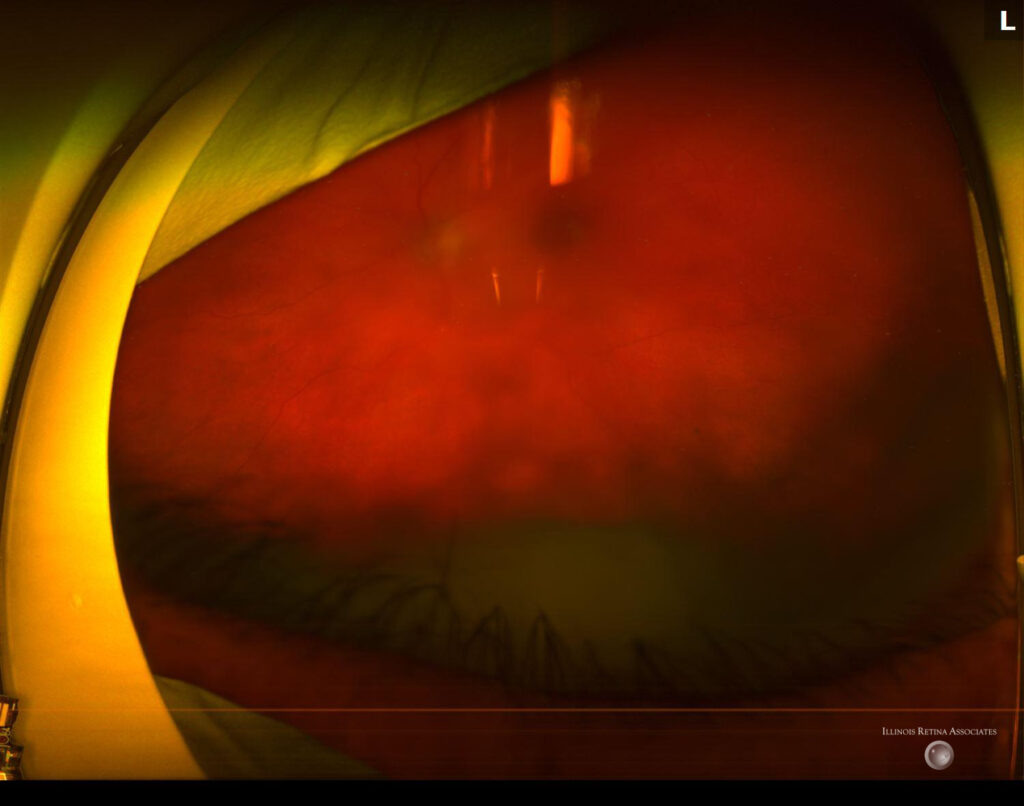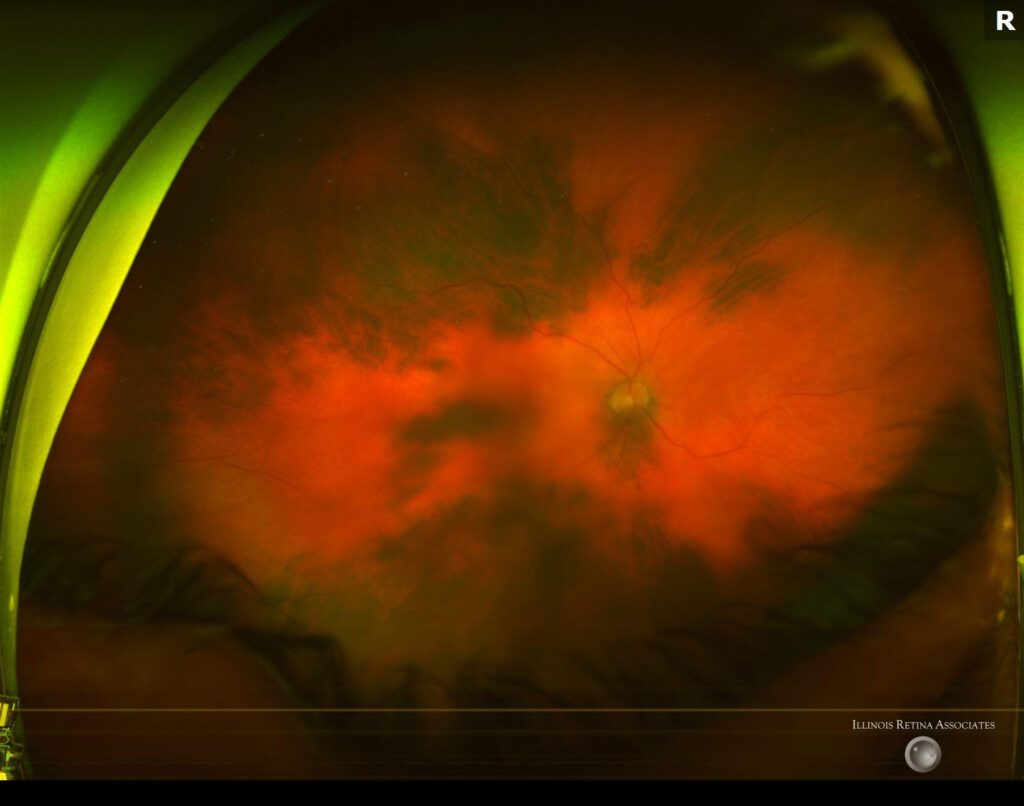Isolated Choroidal Melanocytosis – January, 2023

History:
A 65-year-old woman was referred for a blurred vision in both eyes over several months. Her past medical history was unremarkable and the patient took no medications. Her review of systems was otherwise unremarkable.
Exam:
Her visual acuity was 20/100 in both eyes. With pinhole testing the patient’s vision improved to 20/60 in each eye. There was no RAPD. Intraocular pressures were 16 and 14 in the right and left eye, respectively. There was no vitiligo or hyperpigmentation of the skin, conjunctiva, or sclera. Anterior segment exam demonstrated 2+ nuclear sclerotic, 1+ cortical, and 1+ posterior subcapsular cataract in each eye.


Figure: Fundus photographs demonstrated choroidal hyperpigmentation in the right eye and a normal fundus in the left eye (poor quality image due to presence of cataract).
Optical coherence tomography (OCT) demonstrated normal images in both eyes. Fundus autofluorescence demonstrated a normal fundus autofluorescence in both eyes. B-scan ultrasound demonstrated no choroidal elevation in the right eye. Unfortunately, images for these tests are unavailable due to poor quality with the dense cataract.
Differential Diagnosis:
-
Isolated choroidal melanocytosis - Oculodermal melanocytosis
- Diffuse choroidal melanocytoma
- Diffuse choroidal melanoma
- Diffuse uveal melanocytic proliferation associated with systemic malignant neoplasm
Discussion:
Isolated Chorpidal Melanocytosis
Isolated choroidal melanocytosis is a distinct clinical entity which has been recognised since 2006 after being described by Augsburger et al.1 It is defined by the following clinical features: (1) discrete patches of clinically flat choroidal hyperpigmentation, (2) absence of ipsilateral cutaneous, iridic, or anterior scleral melanocytosis, and (3) no measurable thickness of the melanotic choroidal lesion by B-scan ultrasonography. It can present with unilateral or bilateral involvement. Lesions may involve either the posterior pole or periphery.
The differential diagnosis of this condition includes other causes of increased choroidal pigmentation. This condition is easily differentiated from oculodermal melanocytosis due to the absence of cutaneous findings. However, clinicians should be aware of this condition as patients with oculodermal melanocytosis are at an increased risk of choroidal melanoma. Additionally, diffuse uveal melanocytic proliferation is associated with a systemic neoplasm (usually a carcinoma) where patients develop rapid onset of bilateral diffuse uveal melanocytic proliferation, however this differs from isolated choroidal melanocytosis as it is usually
multifocal and less uniform. This condition can easily be differentiated from tumors such as melanocytoma and melanoma with B-scan ultrasonography as they will be demonstrably thicker than the surrounding uninvolved choroid.
This case demonstrates the classic appearance of a unilateral presentation of isolated choroidal melanocytosis. The patients decreased vision was accounted for by bilateral cataract. The patient was followed up with annual examination with no change in appearance.
If you are looking to schedule your first consultation, please contact us today by clicking HERE and find the location that is nearest you!
References:
-
Augsburger JJ, Hershberger V, Correa ZM, Trichopoulos N. Isolated choroidalmelanocytosis: a distinct clinical entity? Graefes Arch Clin Exp Ophthalmol. 2006;244:1522–1527.
- Kovoor TA, Bahl D, Singh AD, Ufret-Vincenty E. Bilateral isolated choroidal melanocytosis. Br J Ophthalmol. 2008;92:892.
- Gonder JR, Nicholl J, Augsburger JJ, Shields JA. Ocular and oculodermal melanocytosis. Can J Ophthalmol. 1985;20:176–178.
- Gonder JR, Shields JA, Albert DM, Augsburger JJ, Lavin PT. Uveal malignant melanoma associated with ocular and oculodermal melanocytosis. Ophthalmology. 1982;89:953–960.
- Augsburger JJ, Brooks CC, Correa ZM. Isolated choroidal melanocytosis: clinical update on 37 cases. Graefes Arch Clin Exp Ophthalmol. 2020 Dec;258(12):2819-2829.

